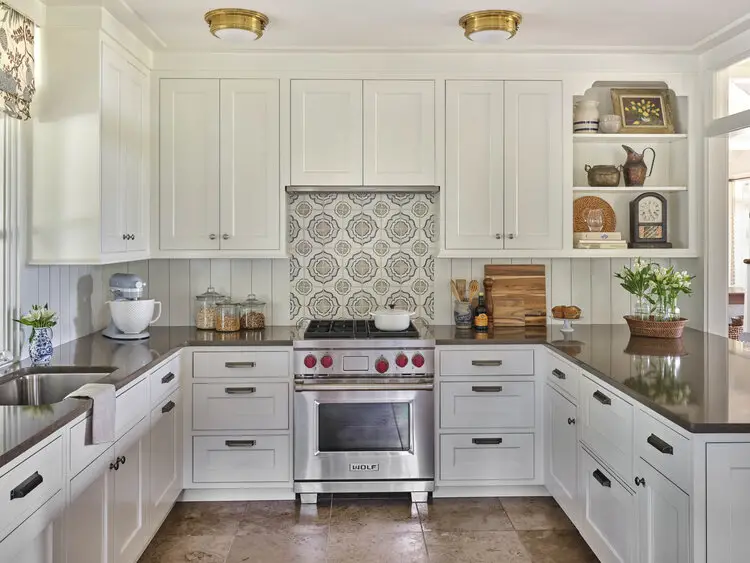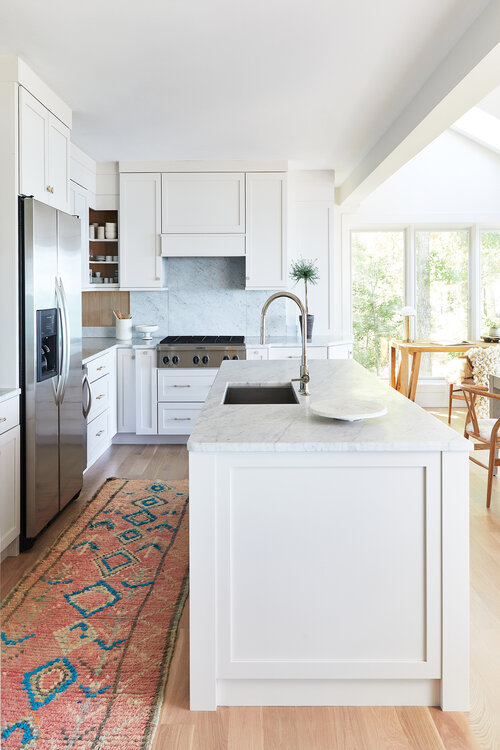There are several helpful hints and step-by-step instructions for installing a new kitchen faucet, including how to prevent frequent issues.

The most difficult aspect of changing a kitchen faucet is getting rid of the old one. Corroded pipes, difficult-to-reach nuts, and inadequate access to fittings are all common occurrences. However, installing a brand new kitchen sink faucet is always a perfect decision for kitchen transformation. If you’re dealing with a Delta faucet replacement, it’s essential to obtain the appropriate Delta faucet replacement parts to ensure a smooth installation process. The instructions that came with your new faucet are likely all you’ll need to complete that aspect of the task.
In an hour or so, barring any unforeseen issues, you may be washing dishes beneath the tap. This post will guide you through a basic replacement procedure and show you how to get around the difficult portions.
Before you start ripping apart your kitchen sink to install a new, more attractive faucet, familiarize yourself with the procedure and any potential roadblocks. Is your ancient kitchen faucet past its prime? Replacing a kitchen faucet, whether it’s leaking or simply old, is one of the most common do-it-yourself jobs in the context of a comprehensive kitchen remodel.
Swapping an outdated chrome faucet for one with a fashionable, brushed-nickel finish isn’t always as straightforward as it seems. Although the replacement operation may go off without a hitch, because faucet arrangements differ, there’s a good possibility you’ll come across a snag or two.
Things to Know Before You Replace Your Faucet

There are many faucets on the market, and people often get confused between the most. It’s always Moen vs Delta. If you have your doubts, you can check out the differences yourself.
Before you begin the process of replacing your kitchen faucet, keep the following six points in mind.
1. Before replacing a kitchen faucet, make sure the water is turned off
You’ll need to turn off the water to the current faucet before you can get started. Most of the time, turning off the hot and cold water supply lines is as simple as twisting on/off valves found on the hot and cold water supply lines to “OFF” with only your fingers.
If your current faucet is more than a few years old, the valves are likely to be jammed or corroded, making them nearly hard to move. Using a hairdryer to apply heat to the valve may typically loosen it sufficiently enough for you to close it.
Alternatively, grasp the valve with locking pliers and slowly persuade it to the “Off” position. However, enough twisting pressure may cause the valve and/or supply line to break, resulting in water spraying out and filling the cabinet.
2. It can be quite a challenge to remove the old faucet
Once the water has been turned off, remove the bolts that hold the old faucet in place and pull the faucet out of the holes. Regrettably, this is a step that is easier said than done. The area beneath the sink where the faucet is attached is frequently small and dark, due to its position. To light the area and release the nuts, you’ll need a powerful work light and an adjustable wrench.
The bolts that keep the faucet in place, like the shutdown valves, might become trapped or corroded. If you have this problem, use a wire brush to remove as much corrosion as possible before applying penetrating oil.
3. Acknowledge your capability and know your limits

Sometimes you just can’t go deep enough beneath the sink to reach the bolts holding the old faucet in place without blocking your way. When it seems that more piping, such as the sink drain trap or trash disposal, will need to be removed, a two-hour faucet replacement task can rapidly develop into a weekend plumbing project.
If you don’t have any plumbing knowledge, it’s usually best to hire a plumber instead of attempting to remove and then replace extra plumbing components.
4. Which one is the right faucet for you?
Get to know your present sink hardware before heading to the home improvement shop to buy a faucet based on its design and appearance. The most effective approach to do so is to remove it. After removing the old faucet, count the number of holes in the sink and measure the distance between the center of the left-most hole and the center of the far-right hole.
It makes no difference how big the holes are. When you choose a new faucet that matches the same hole layout, the installation will be easiest. Plus, because the previous faucet has been removed, you may take it with you to assure an identical match.
6. Hire a professional to install a faucet on the wall
The newest and trendiest faucets are those that connect directly to the wall behind the sink, appealing to those who desire Old World charm as well as those who want to create a semi-professional chef’s kitchen by installing a wall-mount faucet with a rotating and extending faucet arm. Regrettably, this is also one of the most time-consuming repairs a homeowner may request.
Switching from a sink-mounted faucet to a wall-mounted faucet necessitates opening the wall behind the sink and running new water supply lines, which is clearly a plumber’s job. Not to mention that you’ll probably want to replace your old sink or countertop to eliminate the extra faucet holes.
Critical Steps You Need to be Careful About When You Replace a Faucet

1. Know where your main water shutoff valve is and how to turn it off in the event of an emergency. Make sure everyone in your house is aware of the situation. If the stop valves on your faucets fail or cease working, you must promptly cut off the water at this main water shut-off valve.
2. Examine the dedicated stop valves on your faucet. They’re generally metal knobs that extend a few inches within the cabinet, either straight or tilted.
3. These stop valves are important because they allow you to cut off the water to only that faucet without shutting down the entire building’s water supply. If the stop valves are worn out, you’ll have to repair them before you can remove the old faucet. Add them to your shopping list if they need to be replaced.
Do You Want to Tackle It on Your Own Because You Enjoy a Good Challenge?
If you love a good challenge, don’t get easily irritated, have a strong back, and have the time to do it without compromising other, more essential things, go for it! We hope the advice we’ve provided above helps you avoid the pitfalls we’ve outlined.
However, if you get stuck, you can always contact professionals! You can reach them at any time during regular business hours.
Thanks to plumberspot.com for consulting.
Leave a Reply